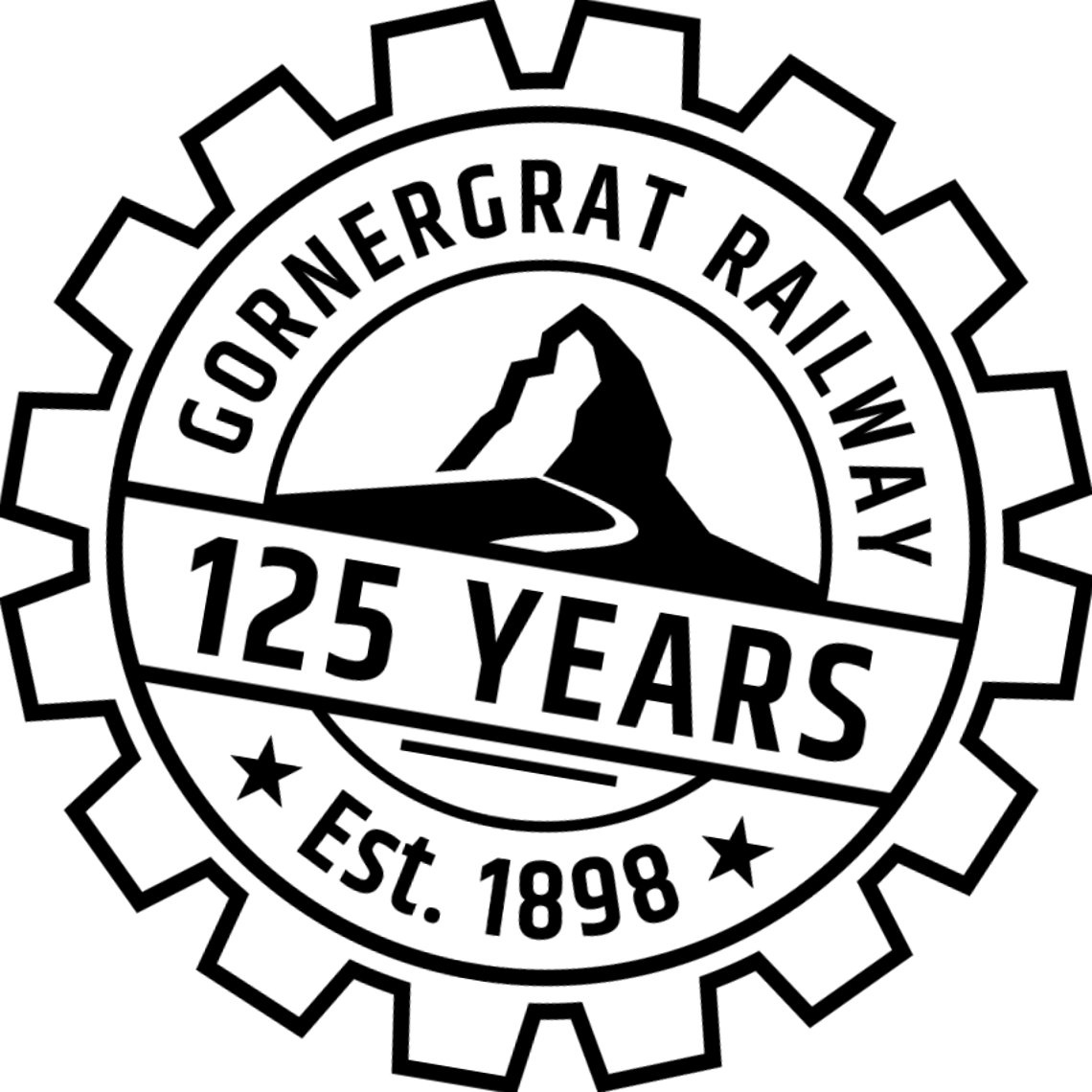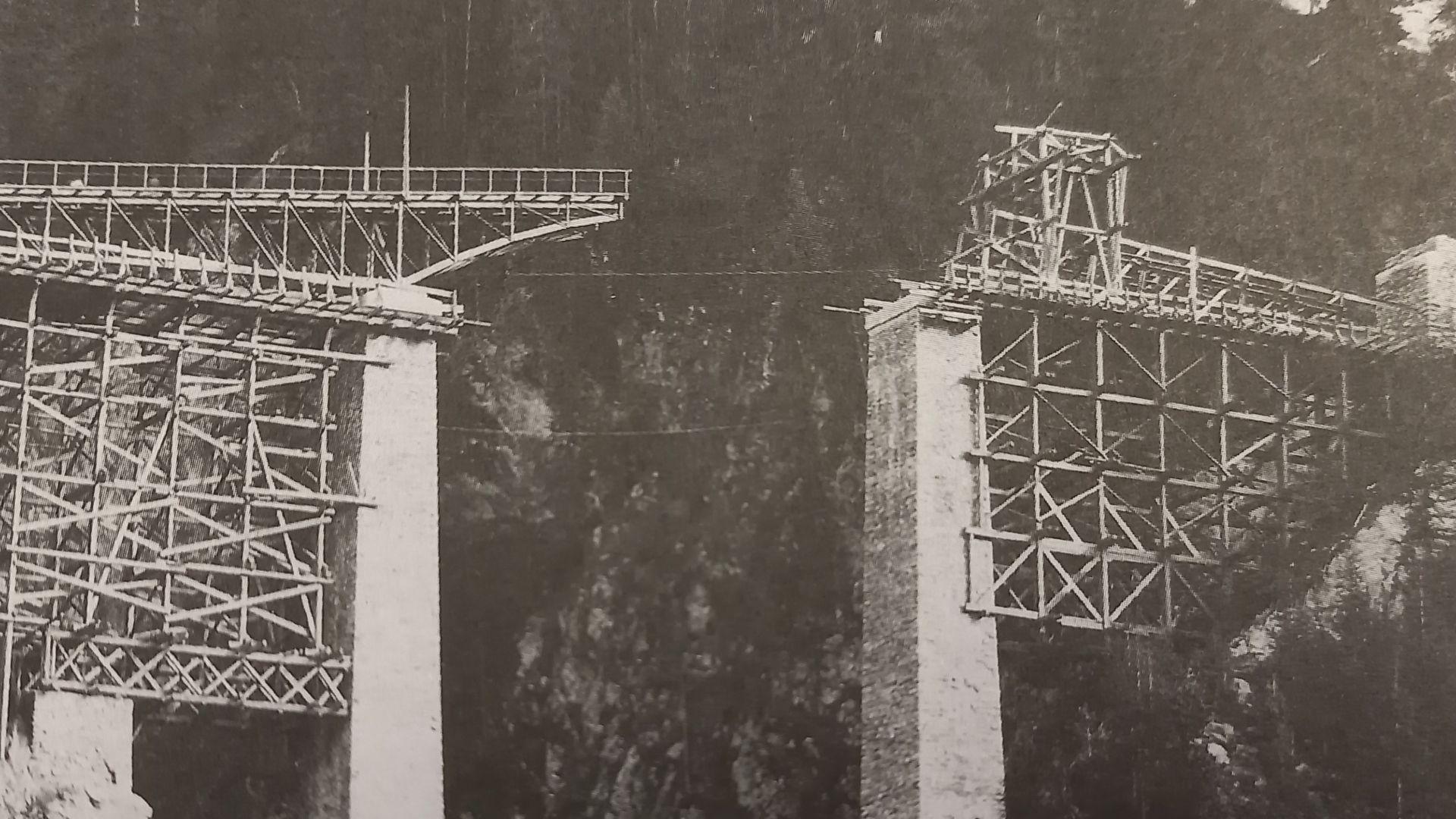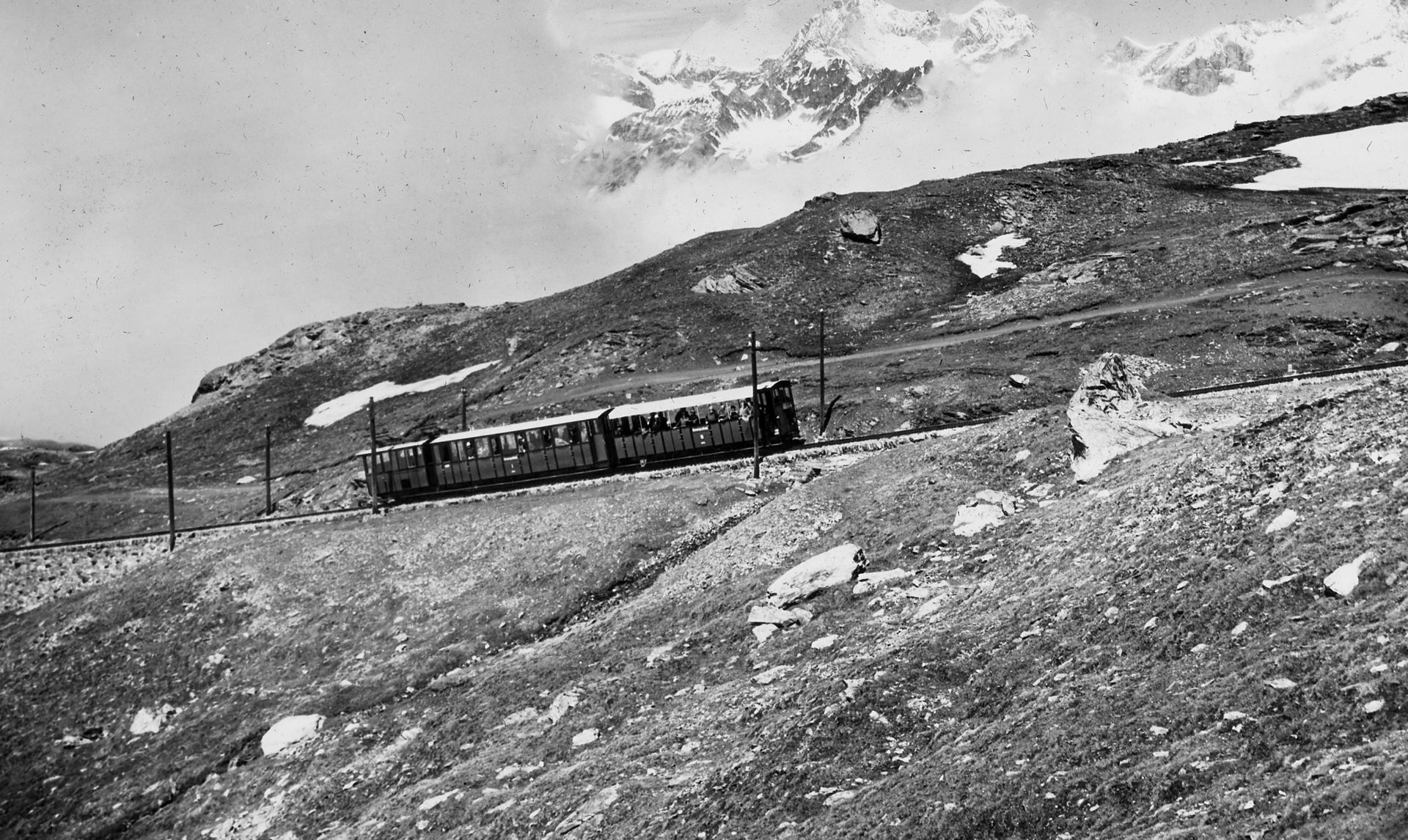Construction completed in a record time of two years
Story 2
It only took two years to construct the spectacular tourist railway line from Zermatt (1,604 m.a.s.l.) to the old mountain station on the Gornergrat (3,028 m.a.s.l.). This is remarkable given the many unforeseen challenges the construction workers had to contend with due to the topography and high altitudes.
Transforming ideas into reality
On 22 August 1890, before the Visp–Zermatt Railway line had even opened, the book printer and Alpine enthusiast Leo Heer-Bétrixfrom Biel had already submitted a licence application to the Swiss Federal Council. His objective was to extend the Visp–Zermatt line by constructing two lines known as the ZermatterHochgebirgsbahnen (Zermatt Mountain Railways). The first line would run to the Gornergrat and the second to the Matterhorn. However, only the Gornergrat project was pursued following the submission of another licence application by the company Haag & Greulich on 10 June 1895.
There was great opposition to the construction of the Gornergrat Railway from the municipality of Zermatt, the Grand Council and the canton of Valais. Their main objection was that the railway would threaten the livelihoods of the guides and porters. In a letter dated 29 October 1895, the Federal Council countered these fears by pointing out that similar concerns previously voiced in the Bernese Oberland had proved groundless.
Quickly constructed at lofty heights
Work started on the railway in May 1896 and could only be carried out at these altitudes in the very short period between the spring thaw and the onset of winter. Over 1,000 workers – primarily from Italy – were employed concurrently between 1896 and 1898. The inauguration was initially scheduled for the spring of 1898, but it was postponed until 20 August the same year due to heavy snowfall during the spring. The old mountain station was originally located 71 metres further down the mountainside before it was moved to its current position between 1907 and 1909.
Records kept by the first directors and overseers reveal that the workers at Rotenboden (2,700 m.a.s.l.) only achieved half the amount of work of those working down in the valley, while it appears that work on the Gornergrat stopped completely. The overseers of the construction work ensured that the workers were extremely well cared for and medical examinations were regularly carried out.
Special challenges
The section of line between Zermatt and Riffelalp proved to be the most challenging. The workers had to construct a bridge across the village stream just outside of Zermatt. However, the construction of the 90-metre-long bridge over the Findelbach Gorge proved to be much more difficult. Due to time constraints, the engineers abandoned the original plans for a bridge with stone arches and an iron truss bridge was constructed on pillars instead. Furthermore, four tunnels had to be built in the first section of the line. The tracks were laid successively to enable the steam-powered construction train to transport materials to the worksites. The tracks were fitted with rack rails to allow the trains to operate on inclines of up to 20 per cent. The construction engineers decided to use the rack system developed by the engineer Roman Abt.
The line from Zermatt (1,604 m.a.s.l.) to the Gornergrat (3,089 m.a.s.l.) now covers 9,339 kilometres and climbs 1,485 m.a.s.l.



